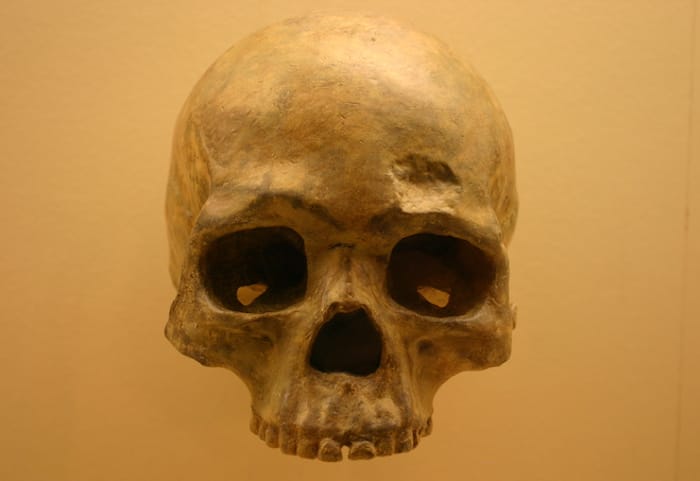Future magic circle trainee Will Holmes examines the conceptions of legal personhood

In the latest instalment of a mini-series that provides a historical perspective to the legal quandaries of the present, future magic circle trainee Will Holmes argues that the prehistoric partible self offers an insight into the modern legal questions surrounding what is property and what is a part of us.
Since prehistoric times, humans have grappled with their understanding of themselves and how they interact and regulate things around them. This can be seen in the shifting sands of property law. Sperm and cyborgs are the latest protagonists to blur the lines between what constitutes property and what is a part of ourselves.
Over the past couple of decades, sperm has on several occasions become a legal exception to the default position that our bodies and body parts cannot be property. As Morag Goodwin shows, scientific advancements have enabled bodily material such as sperm to be treated in novel ways that have led judges to consider it property in a variety of different circumstances (from negligence claims to marital property in divorce disputes). Property rights are used to facilitate the transfer of sperm and to ascribe it a monetary value for legal remedy. The question is whether one should be able to alienate personhood from sperm for these purposes. Does sperm’s life-generating potential mean that it can ever truly be considered alien to its progenitor?
Conversely, cyborgs have pushed courts in the opposite direction, arguing that an object should legally be considered part of our bodies. Rather than the likes of Dr Steve Mann’s Eyetap and Meow-Ludo Disco Gamma Meow-Meow’s (yes, that is his legal name) convenient insertion of his Opal travel card chip in his hand, the majority of cyborgs today are people who have lost an organ, limb or function. Anyone with a pacemaker or a bionic prosthetic is a cyborg.
Unsurprisingly, the argument for considering a machine to be part of ourselves is strongest when a machine is used to restore a bodily function rather than enhance it. This issue was raised when the quadriplegic American war veteran Mr Collins had his mobility device damaged by an airline, leaving him with no alternative but to remain bed ridden for 11 months whilst a replacement device was being built. The airline initially provided him with minimal compensation of $1,500, arguing that they had not damaged their customer, but a machine.
The core of the legal dilemmas surrounding the status of sperm and cyborg’s machines is the fundamental question of legal personhood. What counts as ‘us’ and what should be alienated from ourselves? Can ‘we’ be divided?
Such questions benefit from some prehistoric perspective. Ian Hodder describes how evidence suggests that in the Neolithic era (5,000-3,000 BC) the self was partible, which meant that a sense of personhood could be developed in objects. Examining the remains of the 9,000-year-old town of Çatalhöyük, Hodder searches for evidence of property rights using indications of bodily boundaries and the self as an autonomous agent as his guiding criteria.
He finds that houses were constructed with skulls placed in ritually important locations such as in the foundations and on the walls. Furthermore, there is fluidity between humans and animals whose remains and artistic representations often overlap. These findings indicate collective agency (a symbolic sense of family history — literally building on one’s forebears) and a lack of bodily boundaries. In short, there was a very limited notion of property.
This helps us to imply that artefacts such as the seashell ear, possibly the oldest example of a prosthetic in history, could well have been viewed as part of the self rather than an object. It also reinforces the likelihood, as Alessia Zielo writes, that skulls were considered to be linked to the fluid social concepts of life, death and fertility. ‘We’ existed to a certain extent through objects that could not be conceived of as property.
Archaeologists and sociologists broadly agree that the domestication of animals and the development of agriculture led hunter-gather societies to specialised roles and therefore new forms of social identity. The greater the sense of self, the stronger the sense of exclusive property becomes. Indeed, there is evidence of uniquely decorated and individualised skulls in Çatalhöyük, an example of these early developments.
Eventually, skulls are swapped for sculptures in the form of stelae in which humans are first known to depict themselves. This marks the completed emergence of “self-consciousness” (in the Hegelian sense) defined against objects. Ultimately, the cases of sperm and cyborgs test our ability to conceive of a partible self again, but in the radically different context of societies built on individualism and a strong sense of property.
Will Holmes is a future magic circle trainee.
Previous instalments:
What ancient Greek oracles warn us about predictive justice
How the Satanic lawyer created the billionaire legal sector
How to use Roman law to fight the eco war
What lawyers’ response to the printing press tells us about the future of legal tech
What Emperor Claudius would have thought about the City law pay war



